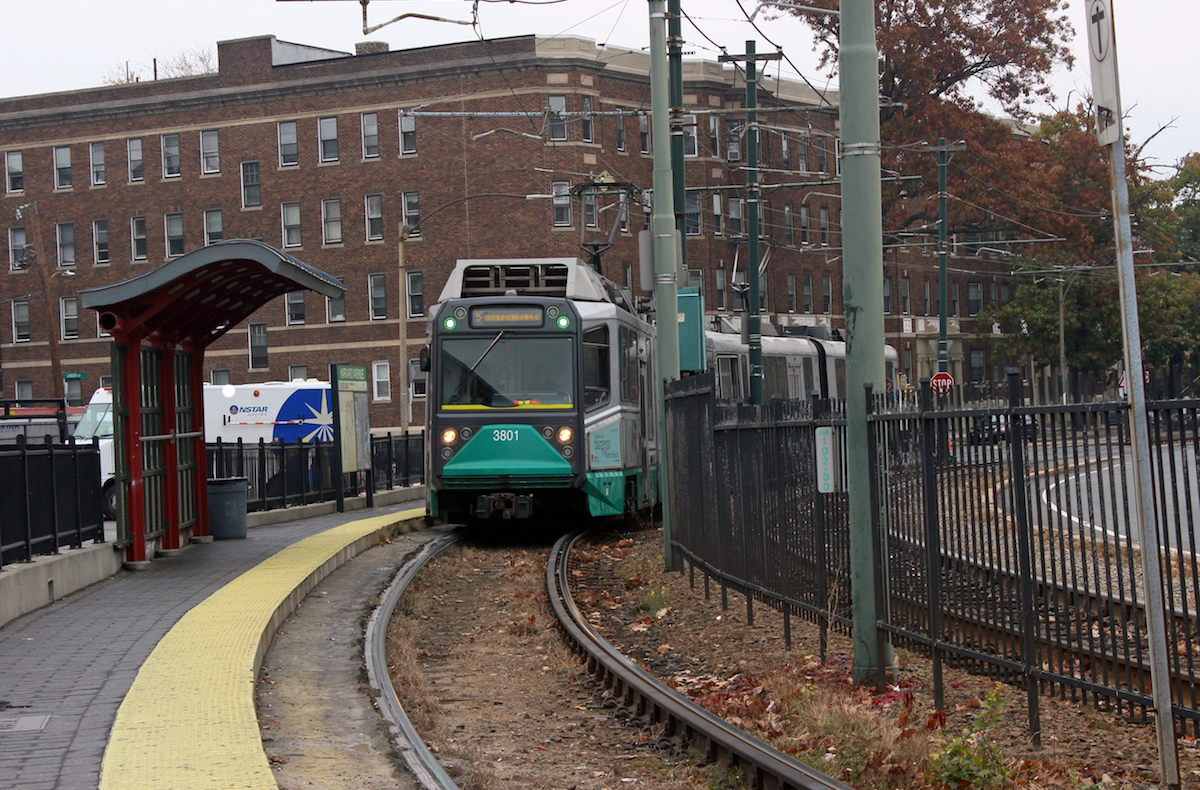The Green Line Extension Is Not Too Big to Fail, But It Needs a Reboot

Photo By Olga Khvan
The MBTA officially notified Green Line Extension contractors on Thursday that they are terminating existing contracts and pausing the release of future contracts. “The decision marks the start of a transitional period, during which no new construction work will be awarded. During this time, however, much of the construction work that is already under contract and in progress will continue,” said the MBTA in a release.
The decision was not entirely unexpected, as it came just a day after the MassDOT Board of Directors and the MBTA Fiscal and Management Control Board reviewed the extensive financial problems facing the project. The boards now face the miserable task of deciding what to do with the bloated but popular project: Kill it and forgo $1 billion in federal aid while kissing $742.3 million in sunk costs goodbye, or modify and rebid the project, further delaying an idea that was first seriously conceived in 2004.
Don’t expect any finality on the project for some time, though, because right now the MBTA’s overlords do not appear to have any reliable numbers that indicate what the project costs. Plus, additional funds for the project could materialize from municipalities affected by the Green Line Extension, as well as the business community that stands to benefit from it.
Those communities and businesses, of course, think the Green Line Extension is a much-needed project, but that doesn’t put it above reproach or cancellation.
As former Gov. Michael Dukakis told the Boston Globe editorial board this week, “It’s not a complicated project.”
He’s right, too. The MBTA is installing 4.7 miles of aboveground light rail track on right of ways that they already own and building stations on property they own across over 50 different parcels in Somerville, Medford, and Cambridge. Many, including Dukakis and this magazine, have noted the numerous transit projects that are cheaper to build than this relatively small project. Even the MBTA’s own outside consultants acknowledge that the tiny project is the most expensive per mile transportation project in the country.
The deeply flawed bidding process for the Green Line Extension has been a real-world case study in the problems facing the MBTA, beyond the well-known decades of neglect that have left the agency with a $7 billion maintenance backlog that won’t be filled, by some estimates, until at least 2040.
The procurement process for the Green Line Extension, as explained in so many ways by the Pioneer Institute, the Berkeley Group, and its own consultants, is one of the major causes of cost overruns. Instead of using commonly employed procurement methods, the MBTA went with a method known as “Construction Manager/General Contractor,” a process approved by the legislature in 2012 as a way to reduce costs and improve workflow. Unfortunately, the exact opposite happened on the Green Line Extension: The project is grossly over budget due to an “excessively schedule driven” process that placed all the risk on the MBTA, not the contractor, White Skanska Kiewit.
Like the disastrous winter that exposed many of the MBTA’s physical problems, the Green Line Extension headache is pulling back the curtain on the MBTA’s existential problems.
The MBTA’s talent is stretched so thin on projects like the Green Line Extension that it relies on outside consultants to keep them abreast of what is happening. They don’t have enough people in-house with the institutional knowledge of the system or complex infrastructure projects to oversee big ticket mega projects like the Green Line Extension or the proposed North-South Rail Link. It’s an institutional flaw that has led to the agency being fleeced by its own contracts. The implementation of this new form of procurement has been an abysmal failure, but it should not torpedo the project.
With the winds of reform in the air, the Green Line Extension project presents the MBTA with tremendous opportunity. To simply kill it would be walking away from a major chance to prove the MBTA can be reformed with the changes it needs to actually function. This is the moment to build the system that Greater Boston desperately wants, and without the poor decision making of the past. Giving up now would be admitting that the T really isn’t capable of moving into the future, and suggesting that it’s learned nothing from its recent (and less recent) failures.
(Full disclosure: the author owns a home within a ten minute walk of one of the proposed stations.)


